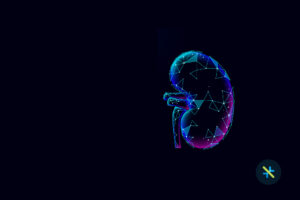Intro:
The last decade has thrown many large Enterprises out of Business. Data is now the new oil. Google, Microsoft and Amazon are expanding their partnerships across the globe. 5G implementation will only lead to additional data coming from machines that could help identify and solve problems remotely and if needed, within the product.
With startups starting to disrupt every aspect of technology that impact our common lives, large corporations have been trying to win the race of digital transformation with significant investments that include building or buying solutions that transform their client’s business operations. Transformation though is not as easy as it sounds with the number of mentions of it in the digital world. Companies and firms of all sizes face their own types of challenges and hurdles. They need a carefully planned out Digital strategy that supports the culture of the organization. They need to match the technology with their business objectives.
Digital shift:
While the first wave of Digital focussed on Social, Mobile, Analytics and Cloud, Digital 2.0 focuses more on Artificial Intelligence, Machine Learning, Intelligent Automation, Internet of Things and Blockchain technologies. These further the need for cloud enablement of enterprises leading to most industries embracing Public, Private and Hybrid Cloud instead of the time tested On-Premise deployments. This also allows Organizations to consume everything on a Pay as you go model with SaaS getting more prevalence. In fact the world is now moving to Business Process as a Service (BPaaS) and even stretching to Outcomes as a Service.
While this change simplifies the decision making with a lot of Capital expenditures for CIOs, it still needs the Chief Information Officer and in a lot of cases today, the Chief Digital Officer to plan for all processes to be consumed digitally by the Millenial or Gen Z employees. Some of the key components of a CIO or CDO’s Digital Plan will include the following
Hurdles in Business Transformation
What constitutes the Digital 2.0 stack
Edge Computing
Today, majority of the enterprises use cloud computing to process their data. The machines, sensors, and other devices send data to the cloud to be processed. This approach has the problem of latency and the problem of sending large volumes of data to the cloud. To tackle this problem, companies have started to embed edge computing. With real-time processing using edge technology, business operations will become much faster and smoother. The devices will be able to process data within itself before sending accumulated information to the central cloud. This technology is especially useful in drones and autonomous vehicles. We are expecting drones to take over aspects like Field Service Management etc. The ability to
AI/Machine Learning
Automation is the primary key to boosting digital transformation. Artificial intelligence isn’t just a buzzword anymore. Every device, machine, and application is predicted to be powered through AI in the coming years. AI-powered machines are less prone to errors and don’t get tired, like humans. In addition to handling the majority of the tedious and repetitive tasks, the focus of AI/ML today is to provide zero touch automation for most processes . AI aims to improve the interaction model between humans and machines.
Conversational AI is helping businesses to communicate efficiently and faster with their customers 24x7x365. AI chatbots will offer out of office support as well as free up employees to handle complex inquiries from customers. To go a step further, voice-enabled devices like Alexa, Google Assistant, Siri can be used as channels by enterprises to further aid self service. Other than questions, a person can get opinions, ask for recommendations, find support, and execute transactions.
Machine learning is another example where machines can learn and perfect themselves. Through intelligent automation, a business can achieve never before seen levels of efficiency and quality. The combination of robotics and automation is the key to accelerate business transformation. This automation comes at the cost of employees losing jobs to machines, but nevertheless, these automated machines may still need a human to supervise them. Human-bot teams may also be used as it’s the perfect combination to yield optimal results and boost performance.
Internet of Things
Digital 2.0 use cases offer significantly higher benefits given the ability of machines and applications to emit data that can be used meaningfully to address multiple problems. IoT envelops three fundamental technological trends. Big data, Increased use of smartphones and social networking, and the capability of the business to leverage cloud computing
The data is collected in an abundance, but the issue lies with how you utilize the data. The majority of data is not used, which results in inefficient business decisions. The true potential of IoT lies in the efficient utilization of data, to boost productivity and not just making devices communicate with each other. IoT can help enterprises to make faster and accurate decisions as all the machines, devices, and employees are connected with each other. Real-time data analysis and real-time tracking of operations will transform how businesses operate, thanks to IoT. Use cases include connected machines that diagnoses its own fault and creates its own service tickets for technician visits or remote patient monitoring to improve the quality of care provided by healthcare providers
Author

Srini Karunakaran
Srinivasan is a tech-savvy IT services delivery specialist with close to 25 years of demonstrated industry experience. Srinivasan is a strong operations person with extensive experience in Global IT Software development Services delivery, Business Relationship Management, and Operations Management. Srinivasan is highly skilled in strategic planning and has successfully implemented innovative engagement models that drive cost-effective IT services delivery.








